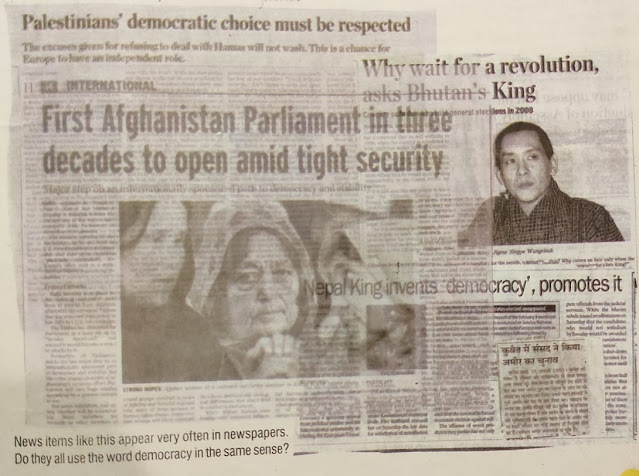6.Chapter 17.The Era of Harsha.History.
Chapter 17
The Era of Harsha
KAPSKAT pale HURAS
SINOND INDUS D.2 After the fall of the Gupta dynasty, the country was
disintegrated and many new kinossomo nean in India. During this time the Vardhman dynasty started
increasing their power under their first ruler, Prabhakarvardhana who ruled
from 580 CE to 605 CE. He conquered many
places and established a large kingdom) He was succeeded by his son,
Rajyavardhana (605 CE to 606 CE) to the throne of Thanesar, Shashank, the ruler
of Bengal, got him killed. Now
Harshavardhana HARSHAVARDHANA EMPIRE 606 CE - 647 CE was crowned as the King of
Sthanvisvara (now Thanesar, Haryana) in STHANVISVARA Yang 606 CE. He was only 16 years old at that time. OKARAVE Moyra We know about this Sumatra
MAGADWA period mainly from four ain sources - i) Contemporary inscriptions,
coins and some rockedicts, (ii) Travel of account of Hiuen - Tsang, a Chinese
traveler, (iii) Suvnagin o Pattoli GURJAR Borne DAS WHAINI son Bodh Gaye VALABHI Territory w BOJAKAS M
Pode ITINKAS LALONGA Bay Arabian Sea Bengal Ke Harshacharita written Satya Puso
Coway CHOLA by Banabhatta, (iv) Priyadarshika, Naganand and Ratnavali written
by Anche Harsha himself. INDIAN OCEAN
Harsha Empire 1.43
19 R HARSHAVARDHANA
EMPIRE Harshavardhana ruled form 606 CE to 647 CE. His empire included present Punjab, Haryana,
Rajasthan, Uttar Pradesh, Odisha and Bihar.
Administration The king was all powerful. He was the head of judicial and civil
administration. He was also the
Commander - in - Chief of his army and led his forces in war. His administration was quite similar to that
of the Guptas. He had a Council of
Ministers to assist and adviseh him. His
ministers were known as Sachivs or 60 Amatyas.
The provinces were also known as Bhuktis or Desh. These were divided into Vishyas Pradesh
Uparika was the Harshvardhana head of the province. His work was supervised by Uparika maharajg
or Kumaramatya, who was normally a prince) GNE There were village panchayats
which were headed by Gramik. He looked
after the needs of the villages. There
were other officials also to help the Gramik) Harsha was a benevolent
ruler. He built temples, chaityas,
vihars, dharmashalas, schools, etc. Nalanda University was granted the income,
received from 200 villages, for its development and maintenance. Religion in the beginning, Harsha was a
devotee of Shiva and worshipped Shiva and Surya. Some coins have been found in Farukhabad (UP)
bearing images of Parvati and Surya but after coming in contact with Hiuen -
Tsang, there was a greater impact of Buddhism on him. He was very tolerant and respectful towards
all the religions) Vaishnavism and Shaivism were the most popular sects of
Hinduism during this period, Harsha used to organize a conference at Prayaga,
Allahabad, the sangam of Ganga, Yamuna and Saraswati, every five years. At this occasion, he used to give alms (dan)
to about five lakh needy and poor people of all religions, for the Hindus Do
You Know? Hiuen - Tsang a Chinese
traveler Harsha used to give away all his wealth and belongings - clothes,
ornaments, etc. , collected during the
last five years. He would then request
his sister, Rajshree, to give him clothes to wear. This was repeated after every five years at
the time of Magha Mela at Prayag. 144
Social Condition (The
society was mainly divided into four Varnas, le. Brahmins, Kshatriyas, Vaishyas
and shudras The Brahmins were highly respected. They led a plous life. People
lived harmoniously, The Shudra did not have a good position in the society.
They had to live outside the towns.
Economic Condition The economy was well - developed and people were prosperous
and happy. Trade was flourishing and Kapisha ya WANT Telemacy was the center of
international trade. Tamrallpt was a selfie mother Agriculture was the main signature of Harsha
occupation of the people. They had to pay 1/6 th of the produce as tax. DAS
Nalanda University: Nalanda University was an international center of
education. It was situate near Patna, the capital of Bihar It had a very large library, Students from
all over the world came t study at Nalanda) Cafter the death of Harsha in 647
CE, the Vardhan empire lost its glory.
There was a quick emergence of many small independent kingdoms. In the south, Chalukyas and Pallavas AMALAN
became more powerful Nalanda University Keywords benevolent charitable and
generous person / king. Contemporary
people or persons living at the same time period. devotee person wholly or spontaneously
devoted to religion or some god.

Comments
Post a Comment